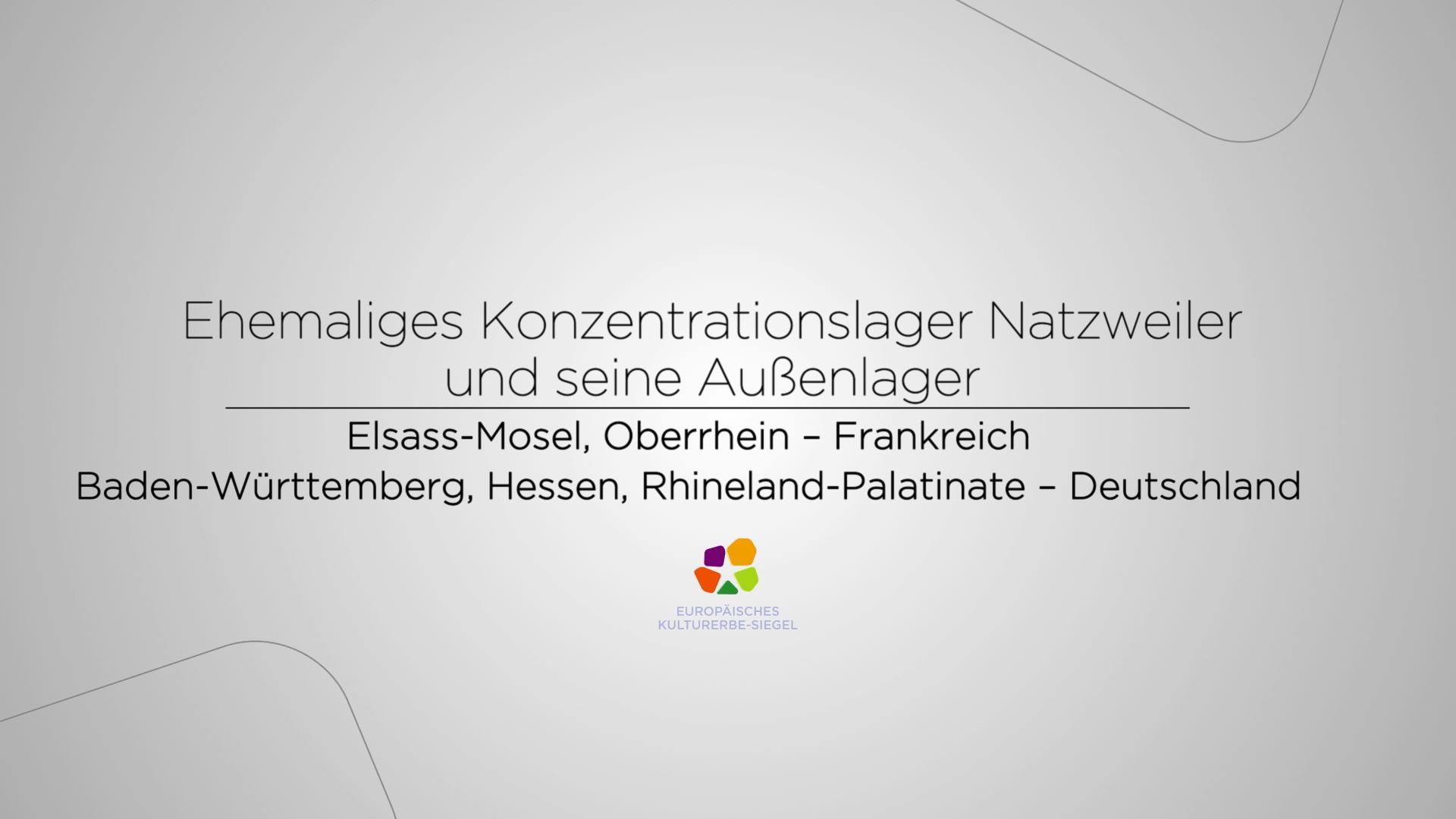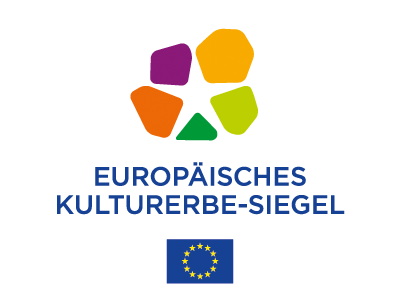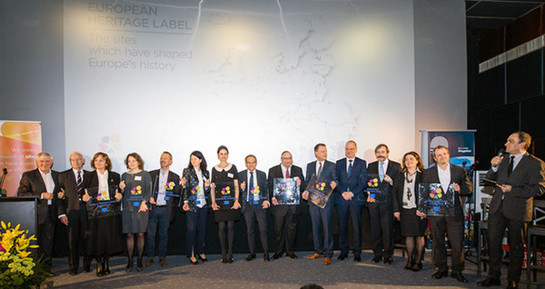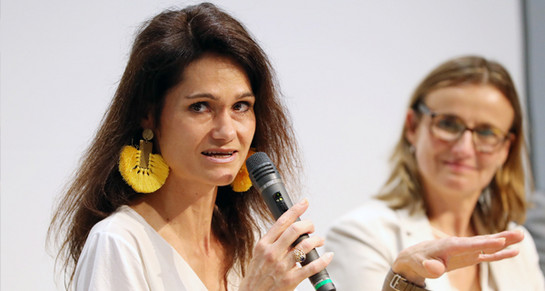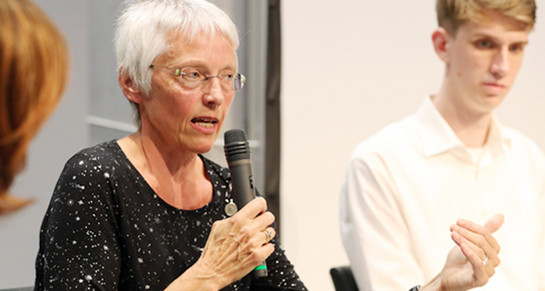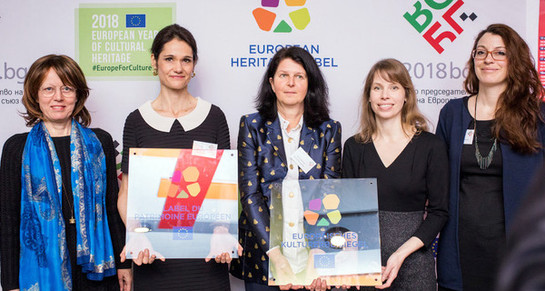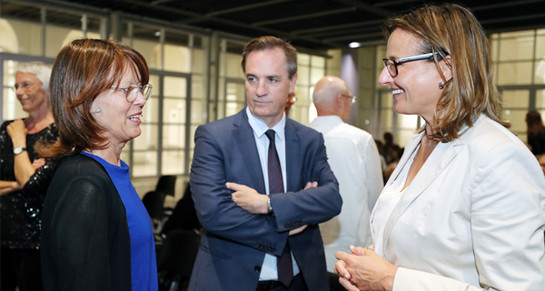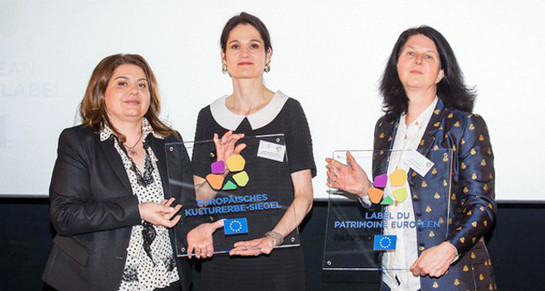The European Heritage Label
Since 2013, sites of various types may apply for the European Cultural Heritage Label.
Important criteria for this are:
- Sites of European cultural heritage bring the European message and the underlying history to life. This transcends the level of pure aesthetics.
- The central issue is the promotion of the European dimension of the sites and the access to it. This includes the organisation of a wide spectrum of educational activities in particular for young people.
European cultural heritage sites may be visited individually or as part of a network. Visitors should develop an awareness of what Europe offers and what it has accomplished.
Award of the European Cultural Heritage Label to the Former Concentration Camp Natzweiler and its Satellite Camp
The former concentration camp Natzweiler and its satellite camps were places of Nazi terror. The memorial sites that have been developed there after the war, have made not only remembrance their task but also the work for peace, reconciliation and education about human rights. Both tasks need to be approached from a European perspective; they reach into the past and into the future. Seen this way, places of horror can become places of culture. Their target group are contemporary people of all ages.
The application was worked out under French leadership and with German participation, evaluated by an independent international jury and finally a positive decision was reached. The label was awarded in March of 2018 in Plowdiw/Bulgaria.
On the French side, the Ministère de la Culture (Ministry of Culture), the Ministère des Armées (Ministry of Defence) and the Centre européen du résistant déporté (European Centre of Deported Resistance Fighters) at the former main camp site Natzweiler-Struthof, on the German side, the Ministry of Economy of Baden-Württemberg, the Verbund der Gedenkstätten im ehemaligen KZ-Komplex Natzweiler e.V., the Landeszentrale für politische Bildung Baden-Württemberg and the Landesamt für Denkmalpflege of Baden-Württemberg participated in the application process.
In France the Cultural Heritage Label (Label du patrimoine européen) was awarded to
- the Centre européen du résistant déporté (Haut-Rhin)
- the memorial site of Fort de Metz-Queuleu ( Moselle)
- the memorial site Tunnel d’Urbès (Bas-Rhin)
In Baden-Württemberg, twelve memorial sites, which are mainly supported by the local citizens, received the Cultural Heritage Label
- the Miklos-Klein-Foundation, former KZ Kochendorf, Bad Friedrichshall,
- the Gedenkstättenverein KZ Bisingen e. V.,
- the Geschichtswerkstatt KZ-Gedenkstätte Echterdingen-Bernhausen e. V., Filderstadt,
- the KZ-Gedenkstätte Hailfingen-Tailfingen e. V., Gäufelden-Tailfingen,
- the Initiative Gedenkstätte Vulkan, Haslach,
- the KZ-Gedenkstätteninitiative Leonberg e. V.,
- the KZ-Gedenkstätte Sandhofen e. V., Mannheim,
- the KZ-Gedenkstätte Neckarelz e. V., Mosbach,
- the Initiative KZ-Gedenken in Spaichingen,
- the Initiative Gedenkstätte Eckerwald e. V., Schömberg-Schörzingen,
- the Initiative KZ-Gedenkstätte Hessental e. V., Schwäbisch Hall, and
- the KZ-Gedenkstätte Vaihingen/Enz e. V.
More European sites that have been awarded the European Heritage Label can be found here.
Parallel ceremonies in Germany and France for the European Heritage Label
In Germany
The German locations were awarded the label on the 12. of June 2018 at the Haus der Wirtschaft in Stuttgart. The ceremony was also the opening event for the complex German-French exhibition “Spuren/Traces” (13. June – 14. July 2018).
Karin Schütz, Secretary of State at the Ministry of Economy, Labour and Residential Construction, handed the award plaques to the representatives of the twelve memorial sites of the baden-württemberg satellite camp sites
In France
With Geneviève Darrieusecq, Secretary of State at the French Army Ministry, presiding, the Cérémonie nationale du souvenir (national French remembrance ceremony) opened at the site of the former concentration camp Natzweiler-Struthof on the 24. June 2018.
The opening of the border-transcending art exhibition “Fraternité” was linked to the presentation of the Cultural Heritage Label by Frédérique Neau-Dufour (Centre Européen du Résistant Déporté) and Sibylle Thelen (Landeszentrale für politische Bildung)





